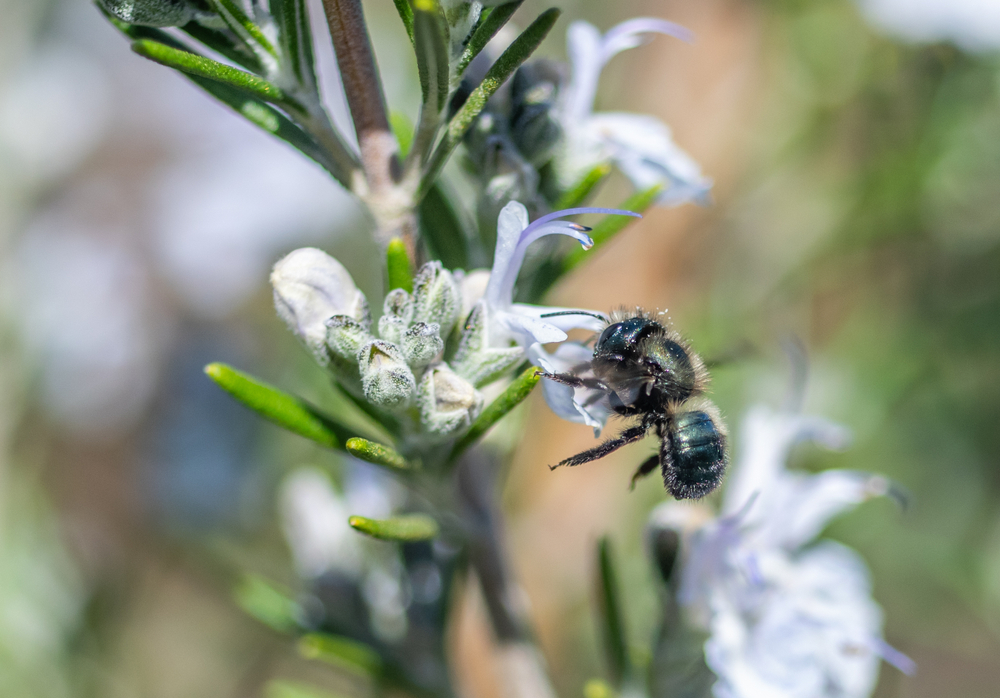A new study shows that blue orchard bees’ exposure to some pesticides is additive, getting worse with each exposure.

Calculating exactly what sort of damage certain pesticides pose to pollinators might be trickier than previously thought. New research from scientists at the University of California, Davis finds that repeated exposure to some pesticides could have an additive effect, getting worse with multiple exposures. That could, they write, require multiple generations to recover.
The study is a specific one, based on a two-year experiment. It looks at one species of bee, the blue orchard bee, native to North America and an important pollinator of agricultural products, especially fruit trees such as apples, pears, peaches and plums. The blue orchard bee doesn’t get quite the attention that the (non-native) honeybee does, but in addition to its utility as a pollinator of fruit trees, it’s also vital for pollinating non-edible native plants.
The study looked at the reproductive effects of exposure to the pesticide imidacloprid, a neonicotinoid pesticide that’s extremely popular as a treatment for seeds, crops and trees. It’s not the most harmful for, say, birds, but for insects, it’s disastrous, disrupting the nervous system.
What’s especially interesting here is that the study measured the effects of exposure to imidacloprid on the bees when that took place in the larva stage and the adult stage, comparing the effects of each. Female bees exposed as larvae had a 20-percent drop in their number of offspring. But when exposed later, as adults, those same already-exposed bees showed a total drop of 44 percent fewer offspring, indicating that the effects are additive.
And, of course, there’s no particular reason to assume that bees that have been exposed to a harmful pesticide once will never be exposed again. It might even be more likely that certain bees would be exposed repeatedly, rather than only a single time. Imidacloprid is pretty water-soluble, which helps with preventing chemicals from persisting in one place, but it seems to have pretty long persistence in soil, according to this study.
Because the effects of multiple exposures add up, the total effects on a bee colony’s population can be devastating. It might take, say the researchers in this study, multiple generations for a population to recover. This bee species in particular is already suffering from a lack of food resources, with fewer wildflowers on which to feed.
Do you know the date this study was published? I need the date to post this on my employer’s FB page “Ther Organic & Non-GMO Report”